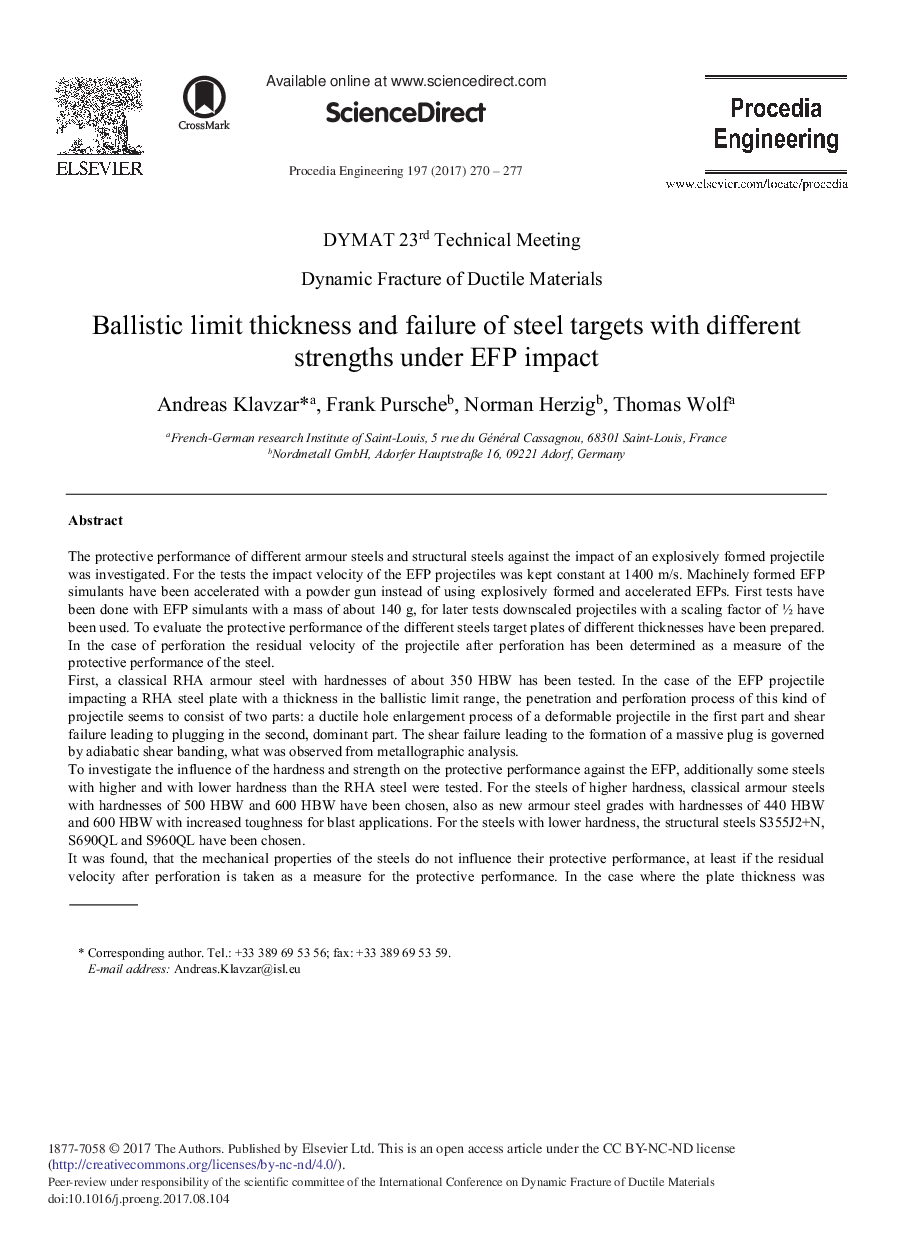| کد مقاله | کد نشریه | سال انتشار | مقاله انگلیسی | نسخه تمام متن |
|---|---|---|---|---|
| 5026903 | 1470629 | 2017 | 8 صفحه PDF | دانلود رایگان |

The protective performance of different armour steels and structural steels against the impact of an explosively formed projectile was investigated. For the tests the impact velocity of the EFP projectiles was kept constant at 1400 m/s. Machinely formed EFP simulants have been accelerated with a powder gun instead of using explosively formed and accelerated EFPs. First tests have been done with EFP simulants with a mass of about 140g, for later tests downscaled projectiles with a scaling factor of ½ have been used. To evaluate the protective performance of the different steels target plates of different thicknesses have been prepared. In the case of perforation the residual velocity of the projectile after perforation has been determined as a measure of the protective performance of the steel.First, a classical RHA armour steel with hardnesses of about 350 HBW has been tested. In the case of the EFP projectile impacting a RHA steel plate with a thickness in the ballistic limit range, the penetration and perforation process of this kind of projectile seems to consist of two parts: a ductile hole enlargement process of a deformable projectile in the first part and shear failure leading to plugging in the second, dominant part. The shear failure leading to the formation of a massive plug is governed by adiabatic shear banding, what was observed from metallographic analysis.To investigate the influence of the hardness and strength on the protective performance against the EFP, additionally some steels with higher and with lower hardness than the RHA steel were tested. For the steels of higher hardness, classical armour steels with hardnesses of 500 HBW and 600 HBW have been chosen, also as new armour steel grades with hardnesses of 440 HBW and 600 HBW with increased toughness for blast applications. For the steels with lower hardness, the structural steels S355J2+N, S690QL and S960QL have been chosen.It was found, that the mechanical properties of the steels do not influence their protective performance, at least if the residual velocity after perforation is taken as a measure for the protective performance. In the case where the plate thickness was sufficient to stop the projectile it seems, that the structural steels perform at least as good as RHA steel. The S690QL steel was able to stop the projectile at thicknesses lower than the RHA steel. This behavior was assigned to its lower sensitivity to the formation of adiabatic shear bands.
Journal: Procedia Engineering - Volume 197, 2017, Pages 270-277